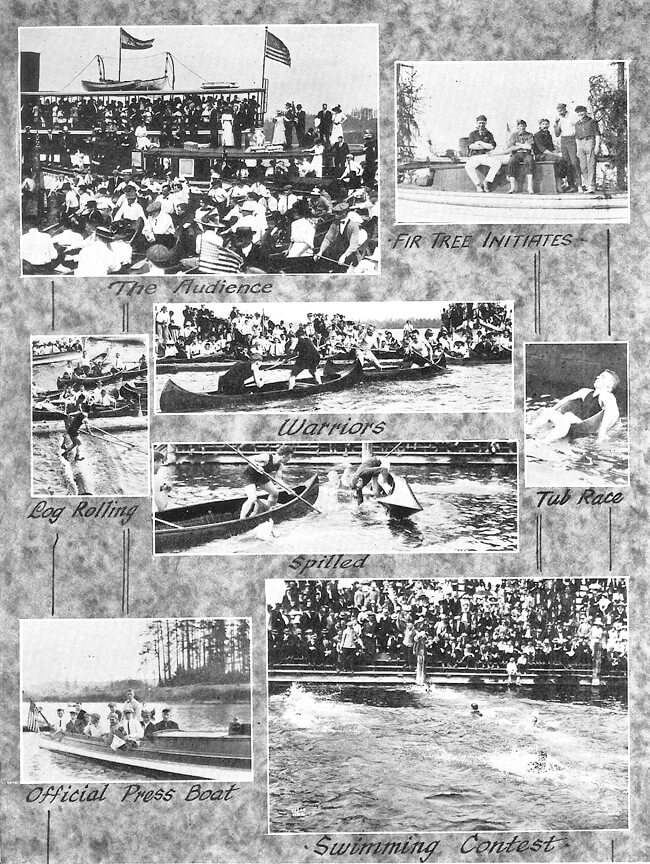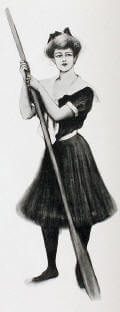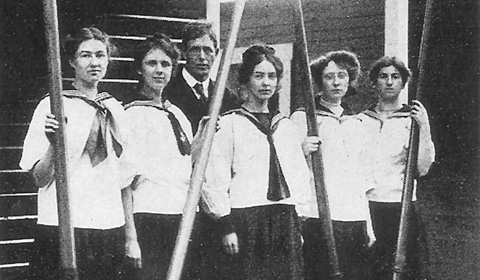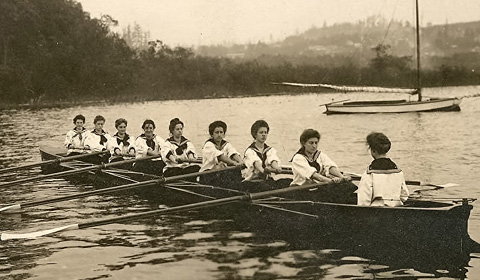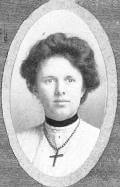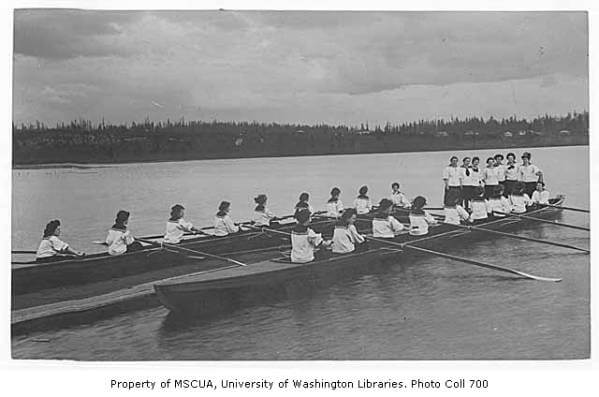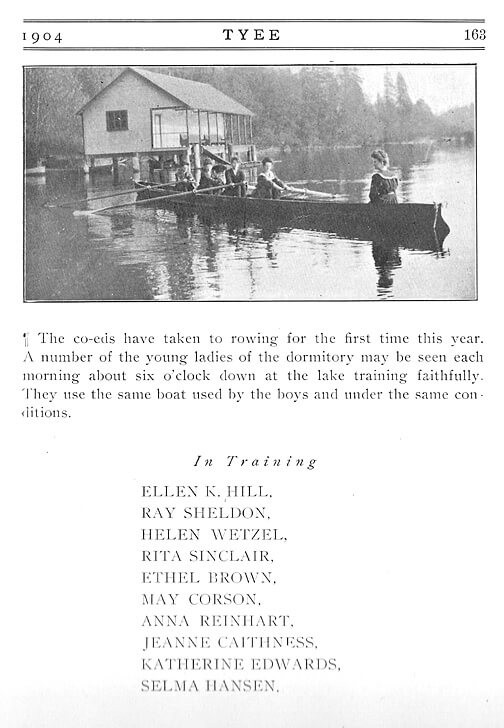
1903 is the first year of documented women’s rowing at Washington, with a photo and page in the 1904 Tyee that noted, “The co-eds have taken to rowing for the first time this year. A number of the young ladies of the dormitory may be seen each morning about six o’clock down at the lake training faithfully. They use the same boats used by the boys and under the same conditions.”
A number of factors played into this opportunity. For one, the new campus was surrounded on two sides by water, Lake Union to the west and Lake Washington to the east, and rowing was a natural attraction. But another important factor was the frontier spirit at Washington; to a large degree, Washington was not influenced by east coast “norms” or culture. Their culture was their own, and it was borne out of a closeness to nature, bountiful natural resources, and a location hundreds of miles from the next major urban center. The Washington identity was whatever they made it.
And make it they did. Importantly, as part of that new identity, 1903 also marked the inaugural “Junior Day”; what through the decades is now continued at Washington as “Class Day”. As described in the early history, “Junior Day” was a university-wide program that included rowing and canoeing (aquatic sports), basketball, athletics (track and field), tennis events as well as other University activities such as log rolling. Both men and women competed in the sports events and at times they competed together in mixed events. The activities and sporting events pitted each class against the other for bragging rights. In addition, each year the junior class planted a tree in front of present day Denny Hall with Professor Edmund Meany, and wrote and performed a farce play. The Junior Day events – sometimes lasting several days – usually ended with the Junior Prom. Although there is no record that the women of 1903 competed in rowing in the first ever Junior Day (May 1, 1903), we do know that efforts were being made for oarswomen to be a part of this unique all-campus event.
Washington Rowing History – Women: 1900’s, with the program really hitting its stride after 1910 – Washington Rowing History – Women: 1910’s.
Women’s organized rowing was unique at the time and in many ways defines the University’s innovative spirit from a young age; but so too is the opportunity to read about it. We hope you take the opportunity to read this exceptionally researched history that Ellen so eloquently wrote to fully understand the legacy – and importance – of the early years of Women’s Rowing at Washington. Tyee photos

